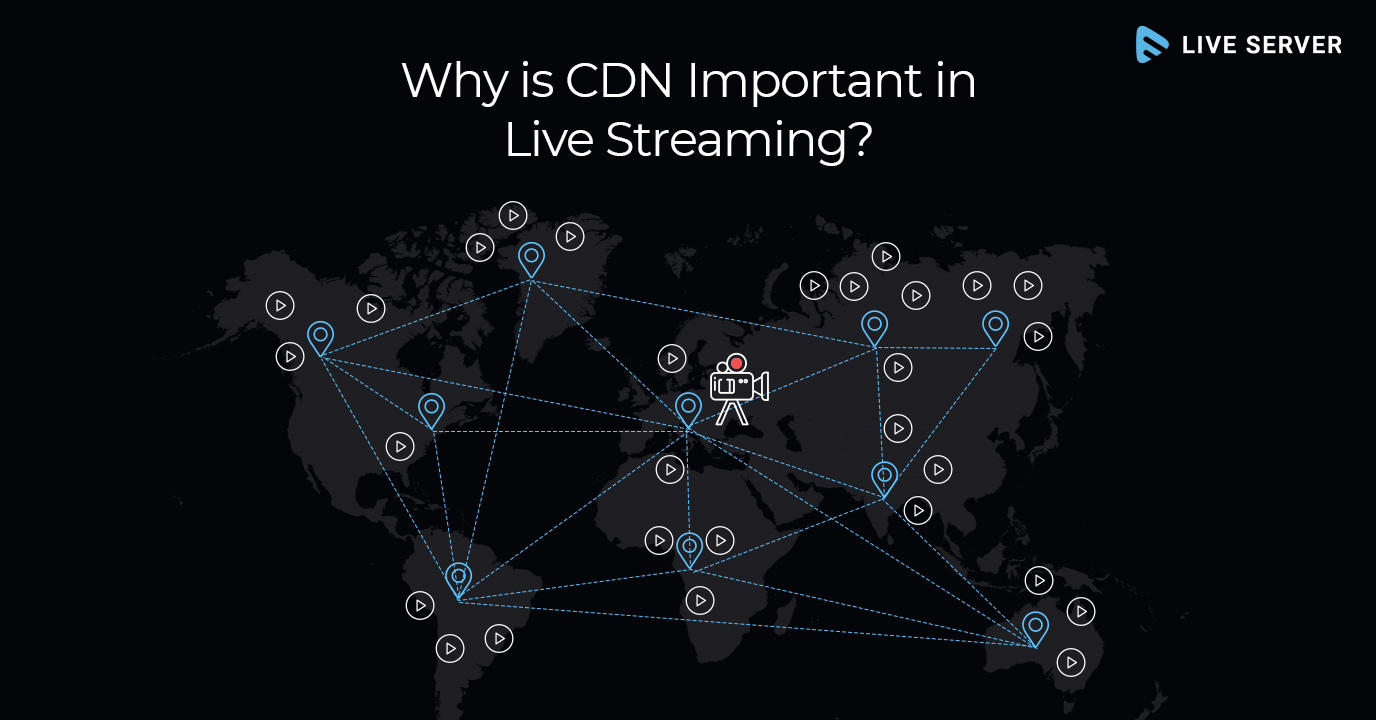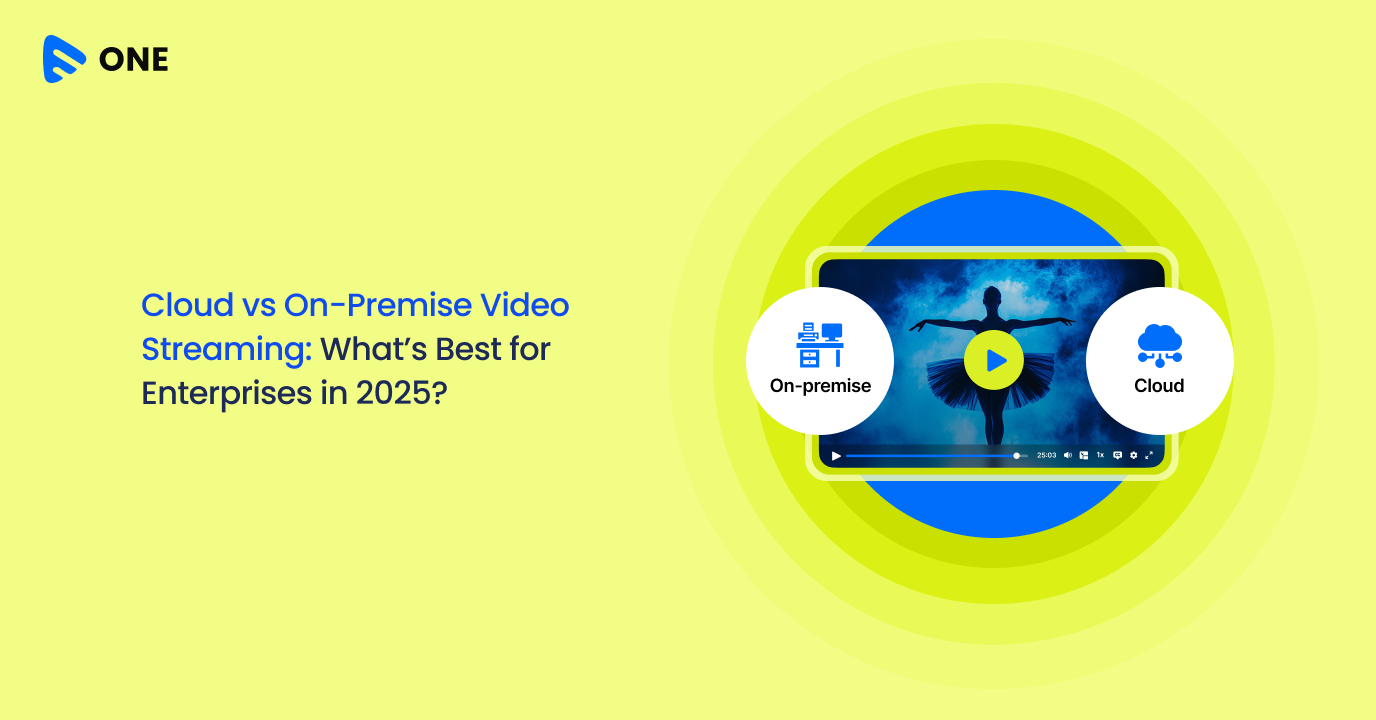As online video consumption is reaching new heights, the streaming industry is constantly facing challenges to deliver high-quality videos quickly and securely to end-users. The case is especially true in live streaming when users get impatient to watch a video when the buffering is more than 3 seconds. Here’s when the role of CDN assumes a pivotal position in live streaming.
Importance of CDN in Live Streaming
Reports suggest that businesses lose 57% of their online consumers if a webpage takes more than 3 seconds to load. When delivering low-latency video streams across the world, you need more than just a single server. Understand why CDNs are critical to live streaming and which workflows require one
What is a CDN?
As we all know, a CDN or Content Delivery Network is a network of different geographically-connected servers situated across the globe used for faster delivery of content to end-users. A CDN helps remove the bottleneck of traffic that could result from delivering streams with a single server, as only a single stream is required for each rendition of an outbound video.
In the case of live streaming- when you happen to stream a video from a CDN, the edge server closest to you attempts to deliver it. This server either has the cached media files The server will either have the media files cached, or it will send a request to another server that does.
Live Streaming and CDN
Since a CDN uses a large network of servers that are positioned around the globe, live content gets distributed instantly to viewers. When you post a live video, the content at once populates all over the world with the help of CDNs. When a user wants to watch a live stream, the CDN selects the server closest to them to deliver it. Hence, there is minimal waiting involved. The media files remain ready for another user in the same area once cached on a local server.
In simple terms, CDNs move content closer to the end-user. So, if content is closer to the users requesting it, they will have a better user experience.
By 2022, 72 percent of all internet traffic will cross CDNs.
Benefits of Using a CDN for Live Streaming
- Scalability- The best part of using a CDN is increased scalability. CDNs help content to reach viewers in the fastest and most reliable way anywhere in the world accommodating innumerable viewership spikes in peak traffic hours.
- Better User Experience– Needless to say, live streaming through a CDN allows you to achieve the best user experience as CDNs minimize buffering and delays to send content streams to viewers across the globe.
- Security– Finally, CDNs provide an extra layer of security through redundancy. Streaming through a CDN can help prevent DDoS attacks, which occur when a site or resource is flooded by multiple, simultaneous attempts to breach it. This happens because a redundant CDN has multiple access points that enables failover. However, if you stream through a single server, you won’t have any back-up options.
- Increased Performance– Increased performance is one of the most advantageous features of using a CDN for your live streaming platform. As your video is cached in all POPs placed around the globe, streaming content is brought closer to the viewer, minimising latency and data loss, thus, increasing website loading speed.
Having a Multi-CDN Plan
A multi-CDN is a system where your content is distributed with not one but several CDN providers.
What happens in a multi-CDN environment is, instead of centralizing online content on a comparatively limited number of servers, the content is cached across several CDN servers dispersed around the world.
This system enables seamless delivery of content to end-users no matter where they are located. A multi-CDN option allows routing of your content to the most optimal server located closest to the user requesting it, thus ensuring lower latency and faster delivery of your content.
A multi-CDN strategy offers reliable alternative strategies against outages and DDoS attacks as it intelligently switches traffic to other available CDNs when one is down. This is why more and more OTT services like Netflix are switching to a multi-CDN strategy to deliver continuous uptime and enhanced QoE to customers.
Muvi Live is Multi-CDN enabled thus enhancing your live streaming performance even during unexpected traffic sipkes in peak hours. Our network is designed for getting live video data to users with high reliability and availability.
Wrapping Up
Viewers want to stream high-quality videos with faster start-up times and zero buffering. In such a scenario, as a content owner, you want your live streaming platform to be available at all times to every end-user no matter where they are located.
Muvi Live can provide a multi-CDN integration strategy through which you can effectively deliver high-quality videos to users across the globe, effortlessly.
Take a 14-day Free Trial, now!















Add your comment